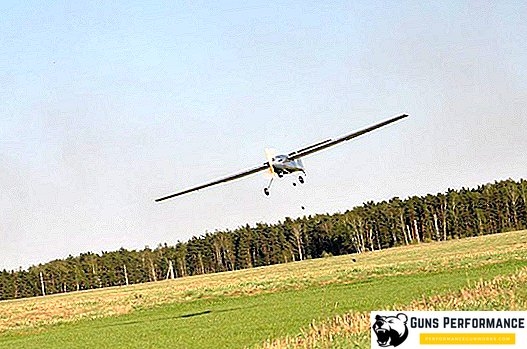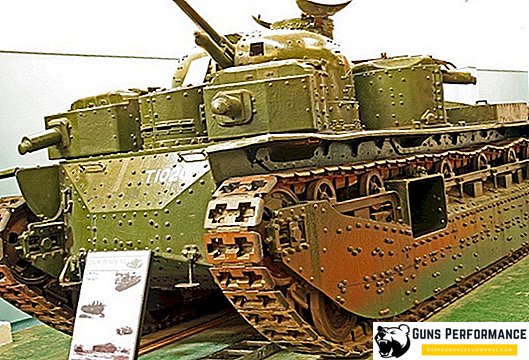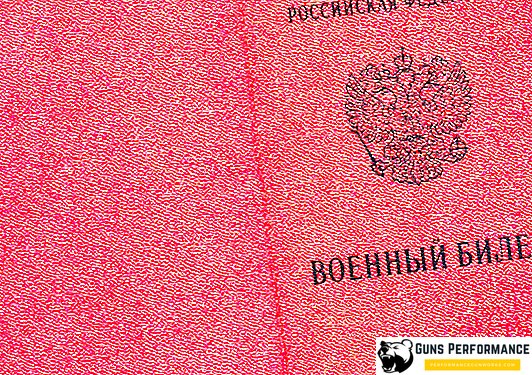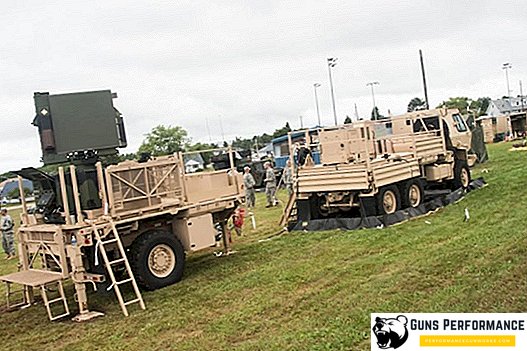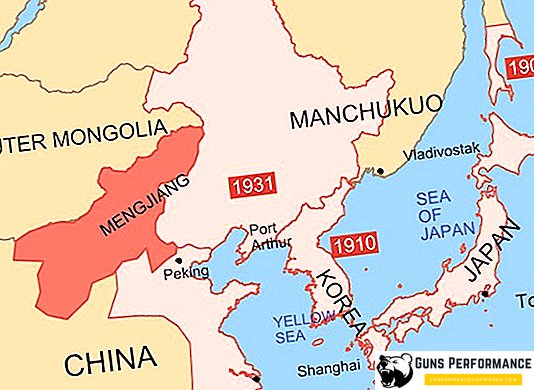The topic of the review is the national Uzbek knife pchak, its history, use and design features.
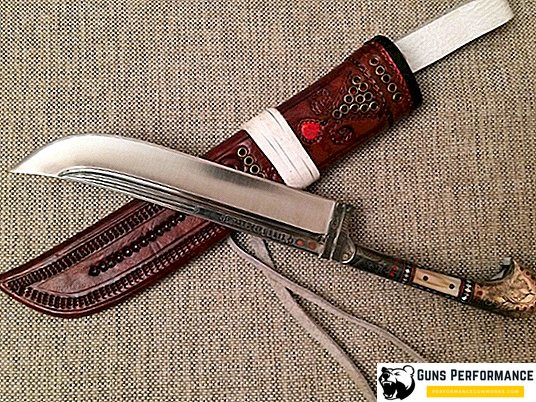
Weapons of the East
The East and everything connected with it, since ancient times, attracted European researchers, lovers of the exotic. Mysterious Turkestan for its neighbors was the same as the fabulous Hyperborea for Europeans was at one time - a country of untold riches and countless secrets. Of course, many wonderful properties were attributed to the arms of the East. Saber of steel "gourde" could cut enemy swords like butter, and then - to fix the beard. Of course, the stories about such “vundervaffe” were greatly exaggerated, but nevertheless, Central Asia has something to surprise any lover of cold weapons. Today we will get acquainted with a kind of "calling card" of a number of Central Asian nations - a knife called "pchak".
A bit of history.
The first documentary mentions of pchak belong to the XIII century of our era, but when exactly this wonderful knife appeared, it is not known for certain. According to the testimony of Soviet ethnographers, some knives found during excavations can be confidently attributed almost to the dawn of metalworking. Let us leave this statement on the conscience of scientists, let us say only that the history of the national Central Asian knife is very ancient. There is a legend that the Persians, who came to Central Asia with fire and sword, were repeatedly defeated by "vagrants" armed with "horrible iron knives."
Presumably, quite a few military commanders of Darius I paid with their heads for not paying enough attention to groups of vagrant dervishes who asked the "mighty warriors" to shelter them, orphaned and poor, near their camps.
It is known that Darius, like Genghis Khan, ordered his soldiers not to touch the priests of the captured peoples and the blessed, which in essence were the dervishes. They carried out the order in a disciplined manner, sheltering miserable vagrants. Here are just the last ones, having waited until the invaders fell asleep, sometimes they used the knives-psakas hidden in their rags. The blades, honed to razor sharpness, easily cut the guards' necks, and then began the systematic cutting of that squad, which allowed the beggars to warm themselves by their fire. This chronicler was mentioned more than once by chroniclers, who were invariably present in the Persian army.
Knife device
It can be called primitive, and you can be perfect. To explain this discrepancy is very simple. Technically, a beacon is a triangular-section blade that has a consignment note or a holding handle. The first option, as the most reliable, has been prevailing for more than one century. The shank of the knife had several leather linings on each side, and on top of it were mounted “cheeks” made of wood, horns or bones.
Modern pchaks can boast of textolite or plexiglass handles, but expensive products made by pichokchi masters (so called experts of knives) still have natural material handles. Despite the apparent simplicity, each of the parts of the handle has its own name. For example, the handle itself is called Dosta, the bolster is called Gulband, and the special metal strip that protects the knife shank from corrosion is Brinch. The writing here is given to a slightly modified, readable Russian-speaking reader. However, if you communicate with the master pichokchi, then you can safely use these names - they will understand you.
The blade has the name "tyg", but for some reason it is not used by all masters, so the blade is better to be called in Russian. As a small lyrical digression, we say that if fate brought you together with "pichokchi", he would carefully listen to all your demands on the knife and try to satisfy them all. This is something that does not take away from the Uzbeks, so it is the tradition of hospitality and great attention to the client.
By the way, the very name of the Uzbek knife translates simply as "knife", not being a proper name. Modest and to the point. Why invent big names for something that is constantly in your belt in a discreet leather case? This is not a ritual Malay "Kris" and not a katana, which the samurai built almost to the rank of a deity. Pnuck is a hard-working knife, the first assistant in the household, in the kitchen, long crossings with a flock of sheep - and you never know where else.

Features of ancient design
Speaking of the bee, it is impossible not to dwell on the design features of the blade. In contrast, for example, from the "bowie", it has no pronounced descents. The blade is reduced from the butt "to zero". The author often happened to read the opinions of the near lovers of everything sharp and cutting that, say, such blade geometry comes from the paucity of inventory: there is nothing for the master to make descents for there is no grinder. This is classic nonsense. Pback has been around for several tens of centuries, but it does not change its outlines. And this means that even in antiquity the very configuration was discovered that "both in the world and in the feast".
And rightly so, the beehive is good for working in the kitchen, and for chopping wood chips for a campfire - and a lot more for what. In the city of Yangiyul, a folk healer, who, among other things, could remove cataracts from his eyes, appeared in his time. This subtlest operation was performed ... correctly, by the pack. And it's not a joke. The author personally spoke with the patients of this "surgeon", and they are quite pleased with the results of his work. To work a healer and further, but accidentally caught his eye on the transfer of medical sense, which told about the structure of the eye.
By viewing the healer, I stopped doing such operations, for I understood what consequences one wrong move could cause in a rather big, in general, knife. But here it is important that with the help of pcek such delicate operations can be done - there would be talent and a good knife sharpening.
Easy to sharpen
And in this regard, the beekeeper simply does not know his equal. It so happened historically that these knives were made of relatively soft metal. High-quality weapon steel was not affordable for the Uzbek peasant, and the blades were soft. But this seeming lack quickly became a virtue: it was possible to sharpen a beehak to the sharpness of a scalpel on the bottom of any ceramic cup. Uzbeks still use this uncomplicated "musatom" to this day, and no one complains. Yes, the knife is blunt a little faster than we would like, but the bowl or plate is at hand! A couple of seconds - and the bee is again immaculately sharp!
About sheaths and different forms of knife
About the sheath, which are attached to any bee, can be said in a nutshell. Leather or leather leatherette, soft, they allow you to easily and conveniently place the knife behind the boot shaft or on the belt attached to the hanger. The fixator, as a rule, does not exist; it is just that the packer is sunk into the cover along the upper third of the handle. Often - at the top. Wooden or cardboard inserts are often inserted inside the case to make it stiff. Both the sheath and the hilt are often decorated, but this is a matter of taste. Another thing - the stigma (tamga) on the blade. Crescent, cotton box and stars - this is the traditional pattern labels wizard. Formerly, the number of stars meant the number of students he raised, but now such stamps are rather decorative.

But you can't say the same about the form of pchak. Basically, 3 varieties are common:
- Tugri chick: knife butt straight, with one or more narrow valleys. Suitable for marching and rough work in the kitchen (cutting meat);
- Kaike pichok: the tip is somewhat elevated above the axis of the blade. The most common form in modern pchak. Ideal for shredding vegetables, thin slicing of meat and fish;
- Tolbargi chick - ("willow leaf"): the tip is slightly below the axis of the blade. Mainly used for cutting and boning animal carcasses;
- Kazakhcha chick: (fishing knife): this form is characteristic of the inhabitants of the Aral Sea coast, fishing industry. The butt of the knife forms a smooth bevel to the point, often sharpened in the form of false blades, which make it convenient to clean the scales from the caught fish.
Daly on the blade does not carry any useful purpose. There is an opinion that the tradition has remained since ancient times, when a successful warrior could make a pike from a trophy saber or dagger. Such a kind of indicator of the morale of the blade holder.
In conclusion, it should be said that traditionally the blades of most pchaks are blued in order to avoid corrosion. There is even a modern saying: "carbon iron pack is for work, and stainless steel is for beauty." Often the secret of bluing is the secret of the family of the master pichokchi. If the reader will ever have to choose an Uzbek knife on the market, then you should not look at the blades shining on the hot Uzbek sun, but rather on dull, grayish black. This knife will be your faithful assistant for many years.


